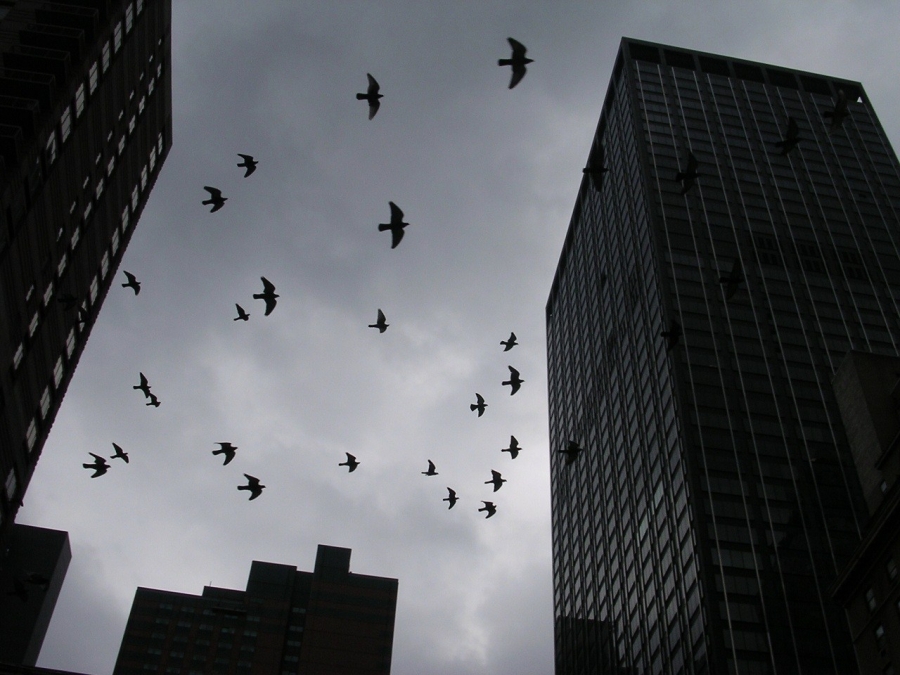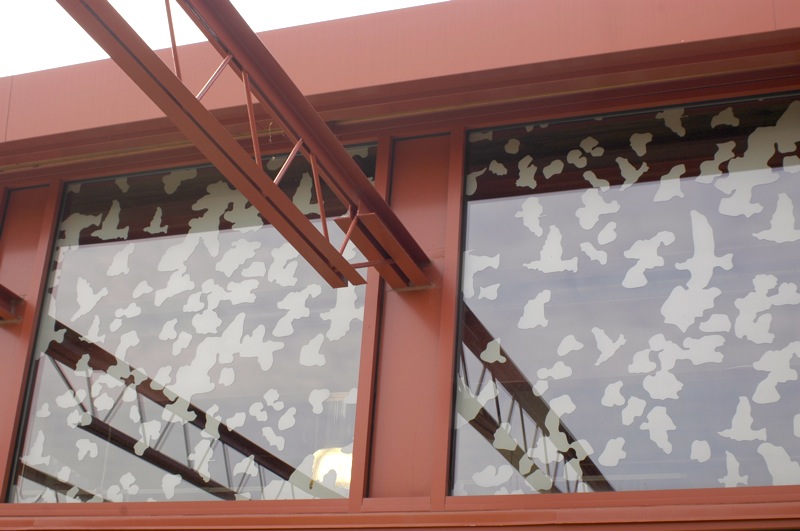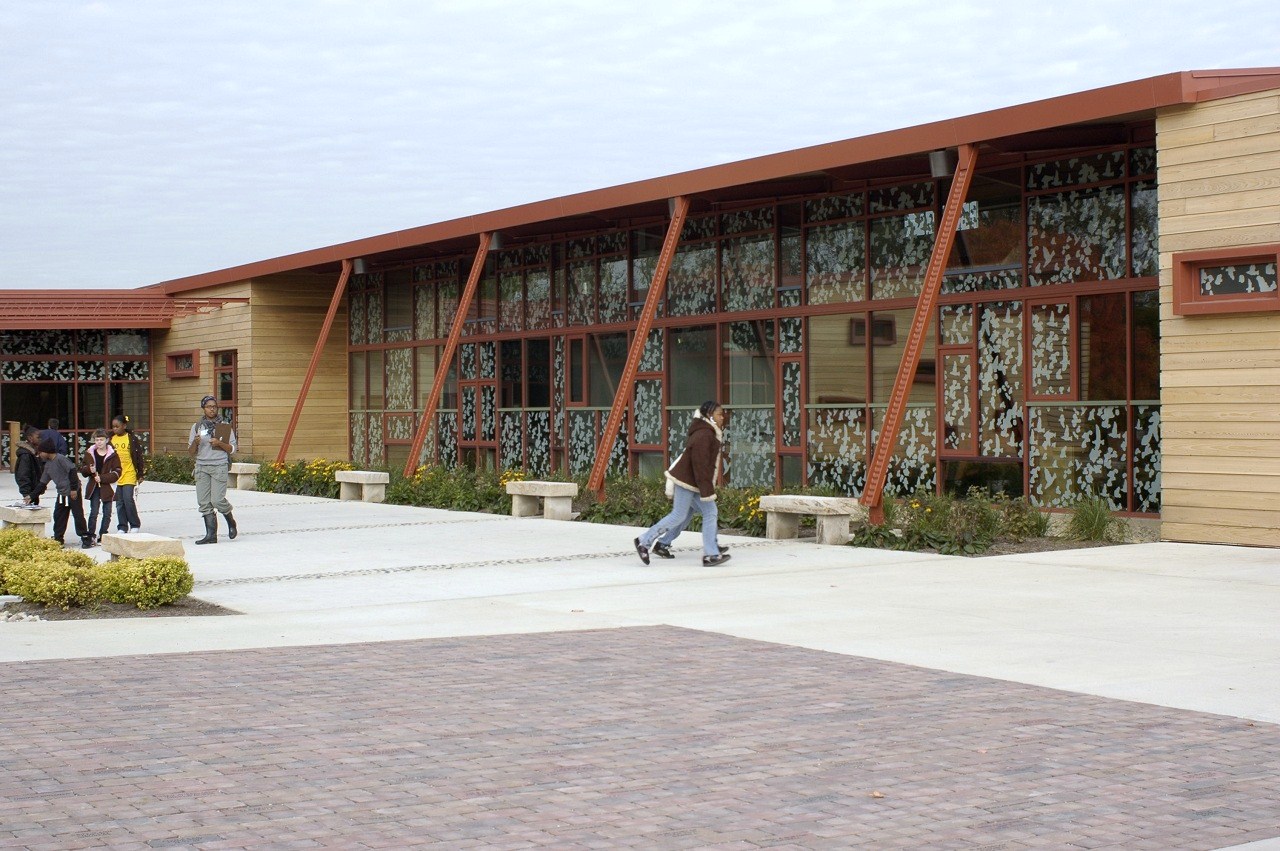Bird Control
Bird control is a method of deterring birds from landing, roosting, and nesting in and around a building. In less extreme examples, birds in buildings can impede the productivity of workers and create additional building maintenance and cleaning challenges. In more extreme cases, they can damage capital equipment and create significant safety hazards. Fortunately, there is an entire industry in existence which offers various products and techniques for the control of birds, including bird spikes, bird shock tracks, netting, fragrances, wire arrays, and bundled wire stands, among others.

Bird Control Spotlight
Case Study: Grange Insurance Audubon Center
A custom ceramic frit pattern was developed to prevent bird strikes through studies of bird-friendly guidelines for the Grange Insurance Audubon Center. Read more about storefront glazing and custom frit patterns in the design features tabs of this case study.
Here’s a brief review of some bird control techniques available for facility managers. I was inspired to craft this blog, remembering myself as a younger man trying to become educated on how to get rid of pigeons in open-bay industrial buildings!
Bird Spikes
Spike strips can be attached to building rooflines and ledges by screwing them down or gluing them. The spikes are longer than the nuisance birds’ legs, and spaced tighter than their body widths, which prevents comfortable roosting. Spike strip variations are also available for I-beam flanges. The idea is to remove any comfortable roosting areas, inspiring the birds to move on to more appealing locations. They are most commonly manufactured out of stainless steel or composite materials.
Ledge Angles
Ledge angles are similar to the architectural fascia used in roofing and siding projects. They remove bird landing and nesting opportunities along ledges by turning an exposed horizontal edge into an inaccessible covered angle. Installation costs may have short payback periods compared to the cleaning costs associated with bird waste removal from ledges.
Bird Shock Tracks
Bird shock tracks operate on the principles of animal behavior modification, and the shocks are not significant enough to harm the birds. Here's the basic idea: rows of metallic mesh conductor are embedded in durable plastic tracks that can be laid flat on horizontal surfaces. The weight of the bird depresses the mesh onto a charged wire within the track, completing the circuit and delivering a mild shock to the bird. Controlling units for the tracks can be powered by convenience receptacles, batteries, or solar units.
Netting
Netting works perfectly when long-standing openings are part of a structure’s architectural design, particularly when it is placed unobtrusively. Netting can be accessorized by properly combining netting material and mesh-size with frames, hooks, and other hardware appropriate to the application.
Fragrances
Science has given us fragrances that are appealing to humans but annoying to birds. Fragrance control methods are good for large enclosed areas. I wish I had known about this option when I was struggling with bird control. Liquid fragrances are contained in replaceable cartridges and loaded into programmable diffusing equipment that can be set to release a specified quantity, using a timer for proper dispersion.
Wire Arrays
Tubular structural members, such as the top edge of a sign frame or the cables of a suspension bridge, are common roosts for birds. Birds cannot comfortably place their legs or bodies through a wire array, which is framed and spaced to stretch just above the top edge of the structure. Wire arrays have the appearance of guitar strings strung along the member's top face and are difficult to visually detect at a distance. In some applications, wire arrays may be more appealing and might require less installation and maintenance costs than spike strips. Like most of these alternatives, any supporting hardware such as posts, bases, and clamps is available in addition to the wires.
Bundled Wire Stands
The top of a pier piling, for example, is a perfect place for a seagull to land and rest, and a great place for a wire stand. These look similar to a bouquet of wire stems; they are constructed of a collection of wire segments which are bundled tightly together at the base, fanning out in all directions to obstruct the space above. Wire stands are good for isolated roost locations where aesthetics may not be a concern.
I met with two bird control vendors during my time at the National Facilities Management and Technology Expo in Baltimore, MD a few weeks back. This is another topic we’d appreciate audience feedback on. If there are any community members, vendors, or facilities managers out there with some good insights, stories, or photos on bird control, we’d love to hear them. A whole separate topic of related interest would be outdoor-focused bird control, such as reducing the number of seagulls around airports and geese on golf courses. I believe there are some very effective acoustic systems available for those situations.

Andrew Kimos
Andrew Kimos completed the civil engineering programs at the U.S. Coast Guard Academy (B.S. 1987) and the University of Illinois (M.S. 1992) and is a registered Professional Engineer in the state of Wisconsin. He served as a design engineer, construction project manager, facilities engineer, and executive leader in the Coast Guard for over 20 years. He worked as a regional airline pilot in the western U.S. before joining the Buildipedia.com team as Operations Channel Producer.
Website: buildipedia.com/channels/operations



